by Bradley D. Youngblood
SEPTEMBER 7-13
DUNHUANG, CHINA
On September 1, I departed the USA for Beijing, China. I was to meet Julia Leder, a 25 year old New Yorker whom I had been corresponding via e-mail for the past two months, discussing what she or I looked like, type of trail running shoes to wear, type of backpack I was using, what freeze dried foods and snacks I was bringing, whether to bring a foam pad or trekking poles , how heavy was my back pack. As you may have realized this was not your ordinary ultra trail run but a 6 day stage race of 250 km or 155 miles called the Gobi March set in the Gobi desert near the small city of Dunhuang .
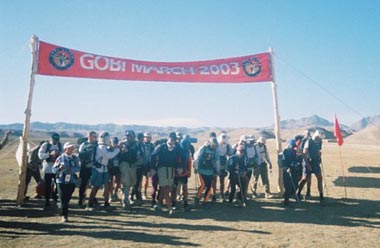
The race is produced by Mary Gadams and her company Racing the Planet. The Gobi March stage race is similar to the Marathon des Sables (MDS) except its not a French race, nor is it in the Sahara desert in Morocco with daytime temperatures of 120 degrees F or higher. The daytime temps for the Gobi desert in September claimed to be in the low 80s, more on the temps later. Competitors are required to be self-sufficient, meaning you must carry all your food, minimum of 7 lbs or 14,000 calories, mandatory gear for survival, sleeping bag , mandatory clothing , running tights or hiking pants, windbreaker with fleece lining, two shirts a long sleeve and short sleeve with patches of racing the planet logo, country flag and race number sewn on and a large Gobi March patch on the back of your backpack.
I met Julia at the Beijing airport around 10:30 PM, September 2, it was a very long flight almost 21 hours counting layovers. This by the way was my first international flight overseas. She waited for me for two hours and we took a taxi to the hotel she reserved for us. I exchanged US currency for Chinese money, our 1 dollar is worth 8 RMB. My money went a long way here in China. We shared a double and got up the next morning, ate breakfast and went site seeing for 3 hours then went back to the hotel and got a taxi to the airport, to fly to Dunhuang.

We arrived at the airport a little late for check-in but luckily a Chinese man came up to me, whom I thought worked there and grabbed our luggage cart and we followed him to the check-in line but he realized that we needed to get our domestic airport tax which costs 50 RMB each, so we followed him to the airport tax counter and got the tax receipt then quickly followed him back to the check-in line, then he did something that made me cringe, the line was long , about 25 people in line waiting to check-in but he immediately went up to the front, handed our tax receipt and boarding passes to the woman behind the check-in counter, and processed our tickets and checked in our luggage. While this was going on Julia remembered reading about this in her Lonely Planet guide book , and the book states that you will cringe and you do. Also, the man will expect a tip for his efforts which he wanted 300 RMB each. I said no in a stern voice, I only give him 100 RMB, Julia gave him 50 RMB. The Chinese are pretty easy going, I think an ugly scene would have occurred if this happened in the US.
We met a tall Swedish competitor Gunnar Nilsson as we boarded the aircraft , he is 6ft 6in with a long mustache and off too Dunhuang. We had a short layover for 40 minutes in a small town 300 miles into the flight then took off again for Dunhuang. We arrived with Carolyn Schaefer, a professional Nikon photographer whom has published photos for sports illustrated. We all four crammed into a taxi and headed out to the hotel the race organizers planned for us to stay in. The Chinese drive differently than we do, which may scare you to death at first but you eventually get use to it , such as driving really fast , driving inches from another car or cyclist, and pedestrians, not obeying street lights, and honking horn constantly to warn others that I am coming this way. We arrived to the hotel, met Mary Gadams , and me and Gunnar shared a double for the entire stay at the hotel. Julia and Carolyn shared a room together. I immediately liked the three new people I’ve met in this short amount of time. We four arrived two days earlier than most of the competitors, whom would all arrive on September 5th. We all four went site seeing the next day . We checked out the sand dunes nearby, me and Gunnar rode camels up a sand dune then down to crescent moon lake , an oasis surrounded by large dunes. Julia and Carolyn went by jeep instead, and later Julia went paragliding over the dunes. We all headed back to the hotel and later checked out the venders selling souvenirs and went into town to eat some lunch and dinner and buy some snacks.
On the 5th of September , all the competitors arrived with a red carpet /fireworks welcome at the hotel. The morning of September 6th was medical and gear check-in. The race organizers weighed and checked to see if we brought enough food and the mandatory gear. My Pack weighed 23 lbs minus water or about 26 lbs with water to start stage 1. That was about the average weight for most of the racers. I believe
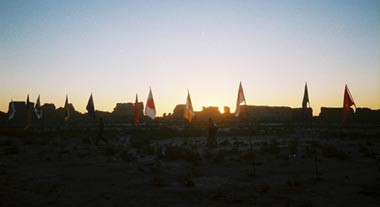
Boyd Matson had the heaviest pack, a little over 30 lbs whom was doing the race for his cable show on the National Geographic Channel. I tried to buy the lightest pack, sleeping bag etc. that I could afford and brought 9 lbs of food that had a total of 19,000 calories for the entire race. I thought I didn’t bring enough foods with high calories and was a little worried. I did bring a lot of frito lay chips, fritos, and dorritos , 12 payday candy bars, and peanut butter, wheat bread, MREs , beef jerky, Ramon noodles and some freeze dried foods.
At 2:30 PM, 42 competitor boarded buses to the stage 1 campsite called camp dynasty. It was a 2 ½ hour bus ride, then the bus drove onto the shoulder of the road and 4 racers at a time loaded up in a 4×4 SUV to the campsite. The dirt was chalk like and would adhere to everything when touched ! Luckily I don’t have asthma otherwise you would be in serious trouble. The driver kept a good distance from the 4×4 vehicle in front of him which spun up a dust storm , shrouding the vehicle in front of him.
We arrived at an ancient fortress in the middle of the desert which was close to 2,500 years old. It was about a quarter mile wide with 20 ft adobe walls 10 ft thick. In the middle of the fortress were plants with 2 inch thorns , one racer wearing sandals stepped on a thorn and pierced his big toe. There would be many foot injuries later in the race.
Everybody also noticed that hey its hot out here! The temperature was not in the low 80’s more like the high 90’s. We all sought out some shade either in the tent or shady areas by the fortress walls. Boyd Matson came up to me and started asking me questions and I realized he is videotaping / interviewing me for his show. He asked me how do I think I’ll do in this type of race? What was my running background and so on, Boyd is a real down to earth person , easy to talk to. The race organizers gave us our last meal and coke. Then it got very dark out, could see every star in the milky way. Then bedtime.
STAGE 1. On September 7, at 7:00 AM the race course designer / director Keith Noyes handed out Stage 1 race directions and briefed us on what color the trail markers, and flags would be and what wildlife we might see or encounter. He stressed if you don’t see a trail marker for over a quarter mile you will need to backtrack. Then he mentioned as we read along with him , compass bearings such as “go northwest at 300 degrees and follow markers to solitary house at 33 km” . That is why we needed a compass, there is some orienteering involved in this race! The first stage started at 8:00 AM and was 43.5 km. Several
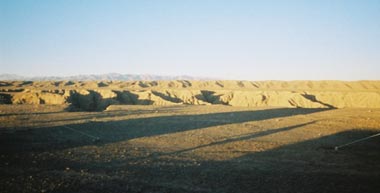
hundred local villagers and politicians arrived at the stage 1 race site, surrounding us before the start. We would begin by following a jeep track for 4km and cross the highway and enter a canyon at 5km, but first we would be engulfed by the chalk-like dust for the first 2 miles. I ran ahead to get out of the cloud of dust , every racer was wearing a bandana across their face to prevent inhaling the fine particle dust. I was about 8th place and running a steady pace. From the knee down your legs were a grayish dusty color. The Irishman Eoin O’Cearbhail caught up with me and we ran together until we entered the canyon, walking up the steep hills and running down the hills at 10km. The jeep track continued up to 15km and then directions said to” head southwest to 16km to the grassy dunes”.
I picked up some water at checkpoint 1 and began climbing up into the grassy dunes this section was marked by flags that said Gobi march and spaced out every 100 yards. The flags would reflect in the distance on top of the dunes and I would walk towards it. I made an effort to walk a straight line to the flag . During this section, Russell Bishop from Iowa whom has finished the MDS and the Badwater ultra marathon came up behind me and we made some small talk and kept walking through the grassy dunes. We both came upon Josh Miller the director of operations whom apparently knew Russell and asked him if this section was marked adequately , he said yes , so far no problems. Russell eventually walked ahead of me and gained distance on me, I just focused on finding the trail markers. At almost 20km I saw a wire fence line and took out my directions which stated, “follow fence west , then south, following course marking to house and pond at 21km” . In the distance to my east, Russell somehow was off course, I
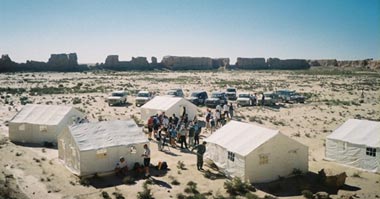
waved my arms but he wasn’t looking in my direction. So I proceeded west and saw the trail marker and knew I wasn’t off course. I followed the course markers to the house and to a jeep road. I came upon a flag marker along the road that was laying on the ground and had been chewed on by an animal (a goat) , I placed the flag upright and walked on. Almost a mile into the walk I heard someone call out in English , at first I thought it was Russell but as he got closer he had a Russian ascent it was Vadim Khazatsky from New York, whom seemed a little frustrated and agitated, I stopped and he asked me if I seen a trail marker and was I on course , he quickly explained he had been lost for almost 30 minutes and somehow he missed the fence line. I told him I had seen a flag not to long ago on the road and was on course and told him the flag was laying on the ground and had been chewed on by an animal, probably a goat. He started to calm down and thanked me, and we proceeded to walk at a fast pace. Keith Peterson from Oregon, an experienced ultra runner having done MDS twice and a multi-day adventure racer jogged passed us and Vadim started to jog to checkpoint 2 in the Loa Shi Tu ancient ruins. I felt like walking to it and began to notice the air temperature was warming up. I caught up with Vadim and Keith at checkpoint 2 and Lisanne Dorion from Vermont arrived a little later as we were heading out and we began to travel through small shale hills and small dunes and then onto Gobi plains . This is where I felt sluggish and a little over heated. My pace slowed down and Vadim ,and Keith, pulled away again. Lisanne caught up with me and she to pulled away. I guess I hadn’t eaten enough or did not take my electrolyte capsules every 30 minutes as I had planned to do. At the 31 km mark I took a break for 10 minutes and took off my rail rider’s hiking pants, It felt good to take them off. I ate a payday candy bar, electrolyte capsule and drank some water. I took out my compass and the directions said “turn northwest at 300 degrees and follow markers to solitary house at 33 km then continue across grassy field at 280 degrees bearing right to fjord river then continue slightly west to lone abode”. I successfully navigated this section without getting my feet wet, but others did not.
At 35km I arrived checkpoint 3 at 2:45 PM and Keith Noyes noted I had dry feet and said good job. I headed northwest into a river valley and followed course markings to a larger river crossing. I thought I will definitely get my feet wet this time. I jumped across the narrowest part of the river but managed to submerge my shoes a little but my Salomon XA Pro GTX XCR shoes and gaiters protected my feet. My
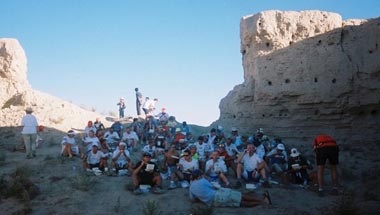
shoes were partially covered with black mud that smelled like a sewer. I followed the flags through boggy ground and proceeded northwest to a canyon downstream along the river but then a 15 foot wall of rock had to be climbed and descended . I made it down without falling and continued through the canyon and saw a herd of 12 camels grazing . I passed the camels who seemed indifferent towards me and finally I finished stage 1 with a time of 7:48 in 20th place. I felt really tired and relieved . I picked up some water bottles and found some shade with the other finishers.
Twenty minutes later, twenty of us boarded buses for a 90 minute ride to the stage 2 campsite. For dinner I ate a freeze dried chicken/rice dinner, fritos, and a payday and drank three 20oz bottles of water. We were rationed 10 liters of water at the end of each stage. I took out a small sponge and took a sponge bath with 1 bottle of water. I also cleaned my muddied shoes with the sponge. I shared a tent with 8 people, 4 Koreans doing it as a team for their leukemia charity whom finished 27, 28, 29 and 31st , an American living in Hong Kong, Edmund Poynton who finished stage 1 in 4th place, and a team of two for a the spastic children association charity, a Swiss and German working in Singapore for a hotel chain whom finished 7th place.
STAGE 2. September 8th. At 8:00 AM we had our stage 2 briefing and found out this would be a canyoneering run and have TEN river crossings and would be a 35km long and would start at 9:00 AM. I had a good night sleep and ate about 1800 calories for breakfast. I had bought some Injinji trail socks that fit like a glove on your feet and put a pair of thorlos socks for padding. The combination of these socks and my GTX Salomon trail shoes would protect my feet completely compared to the majority of racers whose feet would blister up severely by the end of stage 2.
Navigating through the canyon was not complicated and no one went off course. This stage was really fun and extremely scenic and beautiful. I enjoyed plowing through the river crossings and climbing through the narrow canyon walls . We were gradually gaining in elevation and finished above 7000 feet. I finished 14th with a time of 6:32:30. Ed Poynton finished 2nd and the Swiss/German finished 10th and the Korean team finished 36th. The Koreans after stage 2 would finish in the thirties for the rest of the race, but would finish in high spirits.
STAGE 3. September 9th. At 8:00 AM , the stage 3 briefing would commence. Keith said this is the ” high plains drifter” stage. This stage would be 34.5 km long. We would find out later into the stage that orienteering would play a large role in getting to the checkpoints. Also, stage 3 was to start at 9:00 AM but was delayed to 10:30 AM because I accidentally overheard Mary Gadams yesterday talking on her satellite phone to someone about having problems with her Chinese minder about this area being off
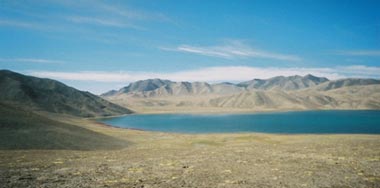
limits due to being a military site and threatening to close down the race etc. That’s all I heard. So I guess they had to remark stage 3. Stage 3 began and we followed a jeep track southwest and crossed a dirt road and the direction said “go at 190 degrees and continue in a southerly direction towards the snowy mountains”. Also, we started stage 3 at an elevation close to 7,000 feet and would finish at 10,000 feet. I decided I would walk more and take it slower than yesterday and run the last mile in. I reached checkpoint 1, dumped my empty water bottles and took three water bottles .
Checkpoint 2 seemed to take forever to reach. At one point I thought I was off course but checked my compass and was heading correctly at 190 degrees in a southerly direction. The reason it seemed to take forever was we were gaining in elevation just as the directions said “gain in altitude to checkpoint 2 at 24 km”. I actually walked the entire course, I only had enough energy to walk fast to the finish! One of the top 5 racers Lin Yi Chieh (Kevin) went way off course and missed checkpoints 1 and 2 and was lost for 2 ½ hours. It would cost him first place overall. Stage 3 went through a dry river bed and went up and down through a lot of hills. The Temperature was in the 80’s. I only saw 2 course markers up to checkpoint 2 at 24 km. After dropping off empty water bottles and taking 3 full bottles at checkpoint 2 the directions said “at 27.5 km carefully cross fence and continue following course markings in a
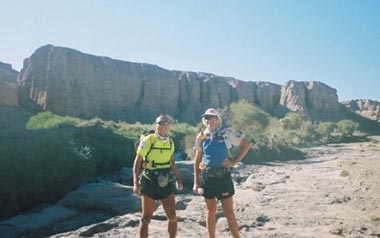
westerly direction. I linked up with Lisanne, Soo Poh Huat (Paul) from Singapore, and James De Jesus from California. We began traversing up and down and gaining in elevation . James began falling behind us , Lisanne asked him if he was ok and he said he felt real tired, felt he was bonking. I asked him if he was taking any electrolytes capsules or drinking an electrolyte drink , he said no , I told him I’ll give him a couple of my electrolyte capsules to perk him up, he took and swallowed them. We then continued walking and pulled ahead of James but after about 30 minutes James caught up to us and thanked me for saving his butt today. Lisanne and Paul started to pick up the walking pace as we neared the finish because we could hear the drumming bong, bong sound, it meant the finish line and I quickened my walking speed and finished a minute ahead of James. It took me 7:04:56 and placed 22nd for stage 3. I ate a chicken/rice dinner, chips and some beef jerky for dinner. A lot of the racers feet began to have severe blisters and Peter Miles of New York, who has finished MDS, the trans333 and dozens of marathons would end up with numerous blisters and green pus coming out of the sole of his feet at the end of stage 3. I assume he was in intermittent pain every time put his feet to the ground. I think I would have quit. He seemed determined and upbeat about finishing.
STAGE 4. The night before Keith handed out the stage 4 directions,” Himalaya Dreaming” and briefed us on the course, and mentioned that they had a lower elevation course at the same 42 km distance for those who are having altitude problems. On the morning of September 10th Keith briefed us again at 7:00 AM and he mentioned there will be a medical check at checkpoint 1,the doctor will ask you some questions and check your heart rate. We will decide if you are fit to continue on and if we decide you should go back down there will be no time penalty for doing the lower elevation course. We would start at 8:00 AM at an elevation of 10,000 ft and ascended to the maximum of 13,000 ft and descended to 9,800 ft at the finish line. I was at first a little worried on doing ok the higher we went up. I had done the Pike’s Peak marathon in 2001, and suffered peripheral vision problems going above 12,000 ft. I recently read an article on a breathing technique for running /walking up higher elevations and would give it a try. Staying on course would not be a problem today, just “follow jeep track across plains and into a
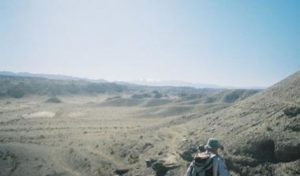
mountain valley up to the north side of Heavenly Lake at 17 km at 12,600 ft”. At checkpoint 1 my heart rate was 142 bpm and I felt great. The doctor allowed me to continue and I proceeded to climb upwards to the highest point in the race 13,000 ft at 13.3 km then the directions said “descend directly into the high valley in front and up out opposite side”. Then “ climb less steeply to second pass of 16 km, 12,770 ft with view of Heavenly Lake”. The lake was dead still and very big and very beautiful, it was worth climbing up to it. The directions said “ continue contouring along north side of Heavenly lake at 17 km at 12,600 ft to checkpoint 2”. It had taken me 3 hours 16 minutes to go 10 miles, I was feeling really good , I actually jogged a couple of minutes to checkpoint 2. Then the directions said “climb gradually up to the third pass at 18 km at 12,770 ft” . At around this point Keith Peterson and Russell Bishop passed me walking at a fast pace. The directions stated “ begin gradual descent to NW into an alpine valley and continue along rough terrain to reach a rough jeep track ( approx. 30 km at 11,385 ft.) at checkpoint 3.
In the distance Keith and Russell were at least a half mile ahead of me. You could actually feel the difference in the way you breathed as you descended which was not as labored and you felt you could move faster than before. After checkpoint 3 , I did some jogging for a couple of minutes then walk, then jog, then walk etc. I looked behind me and saw nobody, that was good. The jeep track road became less rough and more dustier with the chalk-like dust. I had about 6 miles to go until the finish and decided I’ll jog it all the way in. I began to feel like I could run forever, this is rare for me, especially in a race, so I started picking up the pace and began running instead of jogging. I eventually saw two people in the
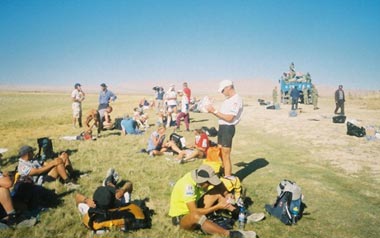
distance, it must be Keith and Russell and I decided to reel them in. I got closer and closer and they were still walking at a brisk pace and unaware of my pending presence upon them. I will remember and relish this moment because both men had the most surprised look on their faces as I passed them running. I said to them “man I feel great”. I finished 10 minutes ahead of them, with a time of 7:46:48 and 14th place.
Later when Keith and Russell finished 17th. Keith came up from behind me, brushed his hand on my shoulder and jokingly said “Brad what the hell do you think you are doing” I thought of saying “ beating you today” but thought no need to rub it in and instead I said I just felt good and decided to run it in and thought you guys might want to run it in with me. So far stage 2 and 4 were the most fun, with great scenery and I was feeling real strong. I ate close to 2,000 calories for dinner and went to bed early for it would be a long day tomorrow.
STAGE 5. On September 11 “ The long march” we had our briefing at 7:00 AM. Keith said the stage would only be 68 km or 42 miles instead of 50 miles. We would start at an elevation of 9800 ft and finish at 4983 ft. The top ten racers would start at 9:00 AM and the rest would start at 8:00 AM. The directions said “ follow river bed to dirt road 1 km, follow dirt road west 2 km. Turn southwest into riverbed and then left up onto dirt track over nearest hill, descend into valley towards houses. Continue south of houses out other end of valley and then down into next valley to more houses. Continue up far side of this valley on jeep track toward houses at top of valley at 10 km, 9600 ft. Continue ascending on single track to high point 11.5 km , 9800 ft with nice views”. I just jogged, walk, jog, walk up to here. This is where I saw two very large Chinese jack rabbits, both had legs like mountain goats and ran full speed up a very steep rocky hill and made a galloping sound at they ran, plus their ears were twice as long as the ones in Texas. At the 12 km I descended right down a grassy slope to a narrow stream bed. I then descended a stream bed until it opened up into a stony river canyon. This was the fun part of stage 5. It was technical rocky trail with narrow descending S- curves. The narrow canyon walls made you feel like you were moving real fast. I mainly walked at a brisk pace and jogged certain sections. Russell and Keith were right behind me during this part of the race. We also had a Mongolian man run and walk with us
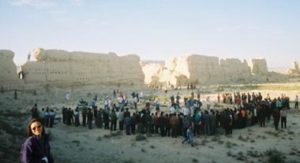
for 22 km, whom was not a competitor, who was to make sure we would not go off course because the course was shorten to 42 miles instead of 50 miles. The three of us were up front and ahead of the rest of racers and our goal was to beat the top three racers who started one hour later to checkpoint 2, which we did, only by thirty seconds. The top trio, Charles Engle, Edmund, and Kevin, caught us and passed us and was the last we saw of them. The trio would share first place for stage 5. When we left the canyon and entered the heart of the Gobi desert Keith and Russell passed me and gained distance on me but I kept them in sight and caught up with them at checkpoint 4 at 45.5 km. Between checkpoint 3 and 4 , the temperature must have been in the high 90’s. The sun felt really hot! I would receive a bad sunburn on top of my chest where my Eco-mesh rail rider shirt has a small gap between the Velcro strap. The sunburn looked like someone focused a magnifying glass on me. The three of us would trek together again, but Keith began to slow down, so me and Russell gained distance on Keith. At some point we looked back and didn’t see him anymore. We would find out he had a bloody nose and lay down on the ground to try to stop it.
I almost forgot to mention from stages 1 to 6, the Gobi desert has a lot of animal feces of different shades of browns, blacks, and grays with different pellet sizes from marble, golf ball, baseball, and football in clusters spread out every 20 feet. You might be stepping on feces a day old to several years. Everything is nicely preserved in this dry desert.
It was nightfall as Russell and I walked the remaining 6 miles and my headlamp was a 7 LED and it went out. The Batteries melted inside the headlamp casing and had leaked out. I had to use my key chain 1 LED light the rest of the way in. There was to be a full moon and it eventually came into view and illuminated the remaining 3 miles to the finish. It seemed to take forever to get to the finish. We finished 12th place with a time of 12:27:53. Keith finished 15th place, only fifteen minutes behind us. Everybody received a coke at the finish. It tasted so good. I had no appetite for solid food for 12 hours. The race organizers allowed a day to recover before stage 6.
On September 12th, the next morning, the remaining racers finally made it to the finish. Nine racers had stayed overnight in a tent at checkpoint 4 and the time clock would stop and restart at sunrise. I regained my appetite, ate about 4000 calories and traded or gave away or bartered for a favor such as Edmund said he would fix my gaiter’s strap for some Ramon noodles. I gave him two packages. I traded a freeze dried dinner for Eoin’s freeze dried dinner, and traded a Ramon noodle package for a cliff shot gel from Otto Wong. The rest of the day we sat in lawn chairs in shade cast by the tents.
At some point during the day, some of the racers became quite concerned on the safety of the current course for stage 6. Stage 6 originally would have a large dune section. The stage would start by entering a canyon with ankle deep stream crossing for 10 km, then the dune section, multiple dunes 600 ft to 900 ft high for 10 km then a road section into town to the finish at the hotel. I think some of the racers who have been suffering from sore/blistered feet and who been off course at some point during one of the stages, let the final stage intimidate them and were deeply concerned that the race organizers were
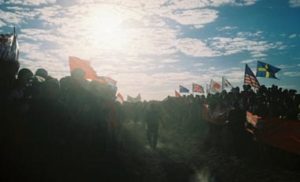
making the last stage to hard and potentially dangerous. Some of the racers felt if someone did get lost and missed a checkpoint, there might not be adequate staff to prevent it. The race organizers later in the day decided to shorten the dune section with one large dune 600 ft high and with smaller dunes. I was happy they decided to make it easier because the entire race had been very challenging from the start, with no warm up stage like MDS has for its first stage which is 25 km of flat desert terrain.
STAGE 6. On September 13th, the final stage or” how I stopped worrying and loved the big dune”. My objective today was to finish as fast as I could. I was feeling strong and my feet were fine. So I went for it! We started at 8:00 AM. The top 10 again started one hour after us. The drummer drummed one bong and we were off. I immediately ran like I maniac at an 8:00 minute mile pace. I ran past a racer who thought he was running fast and passed him. I tried to keep my shoes dry by jumping across the stream and onto dry paths near the stream. Some areas I made my own trail path like a hash harrier does. Several areas of my path had deep grass like weeds that would tangle up your feet and you would immediately fall forward onto the ground. Seventy five minutes into the race I caught sight of the checkpoint 1 staff whom had yet to make it to checkpoint 1, the two young women caught sight of me, they too had a surprised look on their faces and immediately started running to get there before I did. I passed one of them at a stream crossing , and proceeded to catch up to the other but she made it to the site of checkpoint 1 before I did by ten seconds. I handed her my passport and she signed it and she said while laughing, they had left an hour earlier and thought they had time but underestimated the stream crossings which slowed them down. I picked up three water bottles and told her I’ll see them at the finish line. This is where the dune section began and was a lot of climbing . The markers were large red flags and Gobi march flags throughout the dune section. In the distance up about a half mile I could see a Gobi march staff person on top of a big dune and I followed the course markings that eventually led to him , it was Josh Miller, and quite happy and pleased to see me , and said some positive comments on my effort today and noted a time in my passport, and said “this is not checkpoint 2, its north a mile or two, and follow the red flag markers”, I said thanks and headed down the dune. My Salomon GTX shoes and gaiters protected against the sand spilling into my shoes and would remain sand free. I spotted checkpoint 2 in the distance and ran toward it. I picked three more water bottles at Checkpoint 2 and they signed it and was off for checkpoint 3 . I remember that Keith Noyes said in the briefing to head north between checkpoints, so I did, and took out my compass to check now and then and remained on a north course. I several times stopped and rechecked my bearing and finally caught sight of checkpoint 3 in the distance. I arrived and the checkpoint was staffed by a Chinese man and woman who did not speak or understand English . I picked up three more water bottles and had given them my passport to sign but for some reason they wouldn’t sign it which frustrated me for a moment. They tried to communicate with hand gestures like they were holding something in their hand . I spotted Charles and Kevin coming up fast toward the checkpoint. I said I don’t know why they won’t sign my passport, so Kevin asked them in Chinese and they said that they needed a pen. I am not good at charades, oh well, so I handed them a pen from my fanny pack. I was there for almost 5 minutes! Then I took off after Charles and Kevin, but there was no way in hell I could keep up with them. Edmund came up from behind me moments later and passed me. I followed him briefly to the beginning of the tarmac road section of Dunhuang that would 8 km later lead to the finish at the hotel. The temperature was in the 90’s and was hot on the tarmac as it radiated a lot of heat. I encountered a young Chinese woman doctor who was a medical volunteer for the Gobi march, who decided to run with me for several miles. She just wanted to run with me for some reason. I told her I am going to walk for five minutes and then resume running. So we talked a little, she was just happy to be here to help out. The police directed and held back vehicles at the intersections and I said hello in Chinese “nin how” to almost everyone I would pass by. I began to feel really excited and emotional at the same time on finishing. I told her I am going to run now and ran the last mile to the finish where I heard the familiar drumming bong, bong signaling the coming of a finisher. I saw a lot of children with white shirts with red bandanas around their necks cheering and waving their hands as I jogged onto the red carpet leading to Mary Gadams to shake my hand. I handed my passport to her parents who staffed the finish line, one of four Buddhist monks handed me a finishers medallion and motioned for me to sit down with them as they were chanting. I sat down with them as I was still breathing hard, sweating, and feeling euphoric on finishing the Gobi march. My cumulative time was 45 hours 57 minutes 50 seconds and placed 14th. I highly recommend this race for its overwhelming scenic beauty, the Chinese people, the comradeship of the competitors and for Mary Gadams, Josh Miller and Keith Noyes dedication of ensuring a memorable trail running experience.
 The race is produced by Mary Gadams and her company Racing the Planet. The Gobi March stage race is similar to the Marathon des Sables (MDS) except its not a French race, nor is it in the Sahara desert in Morocco with daytime temperatures of 120 degrees F or higher. The daytime temps for the Gobi desert in September claimed to be in the low 80s, more on the temps later. Competitors are required to be self-sufficient, meaning you must carry all your food, minimum of 7 lbs or 14,000 calories, mandatory gear for survival, sleeping bag , mandatory clothing , running tights or hiking pants, windbreaker with fleece lining, two shirts a long sleeve and short sleeve with patches of racing the planet logo, country flag and race number sewn on and a large Gobi March patch on the back of your backpack.
I met Julia at the Beijing airport around 10:30 PM, September 2, it was a very long flight almost 21 hours counting layovers. This by the way was my first international flight overseas. She waited for me for two hours and we took a taxi to the hotel she reserved for us. I exchanged US currency for Chinese money, our 1 dollar is worth 8 RMB. My money went a long way here in China. We shared a double and got up the next morning, ate breakfast and went site seeing for 3 hours then went back to the hotel and got a taxi to the airport, to fly to Dunhuang.
The race is produced by Mary Gadams and her company Racing the Planet. The Gobi March stage race is similar to the Marathon des Sables (MDS) except its not a French race, nor is it in the Sahara desert in Morocco with daytime temperatures of 120 degrees F or higher. The daytime temps for the Gobi desert in September claimed to be in the low 80s, more on the temps later. Competitors are required to be self-sufficient, meaning you must carry all your food, minimum of 7 lbs or 14,000 calories, mandatory gear for survival, sleeping bag , mandatory clothing , running tights or hiking pants, windbreaker with fleece lining, two shirts a long sleeve and short sleeve with patches of racing the planet logo, country flag and race number sewn on and a large Gobi March patch on the back of your backpack.
I met Julia at the Beijing airport around 10:30 PM, September 2, it was a very long flight almost 21 hours counting layovers. This by the way was my first international flight overseas. She waited for me for two hours and we took a taxi to the hotel she reserved for us. I exchanged US currency for Chinese money, our 1 dollar is worth 8 RMB. My money went a long way here in China. We shared a double and got up the next morning, ate breakfast and went site seeing for 3 hours then went back to the hotel and got a taxi to the airport, to fly to Dunhuang. We arrived at the airport a little late for check-in but luckily a Chinese man came up to me, whom I thought worked there and grabbed our luggage cart and we followed him to the check-in line but he realized that we needed to get our domestic airport tax which costs 50 RMB each, so we followed him to the airport tax counter and got the tax receipt then quickly followed him back to the check-in line, then he did something that made me cringe, the line was long , about 25 people in line waiting to check-in but he immediately went up to the front, handed our tax receipt and boarding passes to the woman behind the check-in counter, and processed our tickets and checked in our luggage. While this was going on Julia remembered reading about this in her Lonely Planet guide book , and the book states that you will cringe and you do. Also, the man will expect a tip for his efforts which he wanted 300 RMB each. I said no in a stern voice, I only give him 100 RMB, Julia gave him 50 RMB. The Chinese are pretty easy going, I think an ugly scene would have occurred if this happened in the US.
We met a tall Swedish competitor Gunnar Nilsson as we boarded the aircraft , he is 6ft 6in with a long mustache and off too Dunhuang. We had a short layover for 40 minutes in a small town 300 miles into the flight then took off again for Dunhuang. We arrived with Carolyn Schaefer, a professional Nikon photographer whom has published photos for sports illustrated. We all four crammed into a taxi and headed out to the hotel the race organizers planned for us to stay in. The Chinese drive differently than we do, which may scare you to death at first but you eventually get use to it , such as driving really fast , driving inches from another car or cyclist, and pedestrians, not obeying street lights, and honking horn constantly to warn others that I am coming this way. We arrived to the hotel, met Mary Gadams , and me and Gunnar shared a double for the entire stay at the hotel. Julia and Carolyn shared a room together. I immediately liked the three new people I’ve met in this short amount of time. We four arrived two days earlier than most of the competitors, whom would all arrive on September 5th. We all four went site seeing the next day . We checked out the sand dunes nearby, me and Gunnar rode camels up a sand dune then down to crescent moon lake , an oasis surrounded by large dunes. Julia and Carolyn went by jeep instead, and later Julia went paragliding over the dunes. We all headed back to the hotel and later checked out the venders selling souvenirs and went into town to eat some lunch and dinner and buy some snacks.
On the 5th of September , all the competitors arrived with a red carpet /fireworks welcome at the hotel. The morning of September 6th was medical and gear check-in. The race organizers weighed and checked to see if we brought enough food and the mandatory gear. My Pack weighed 23 lbs minus water or about 26 lbs with water to start stage 1. That was about the average weight for most of the racers. I believe
We arrived at the airport a little late for check-in but luckily a Chinese man came up to me, whom I thought worked there and grabbed our luggage cart and we followed him to the check-in line but he realized that we needed to get our domestic airport tax which costs 50 RMB each, so we followed him to the airport tax counter and got the tax receipt then quickly followed him back to the check-in line, then he did something that made me cringe, the line was long , about 25 people in line waiting to check-in but he immediately went up to the front, handed our tax receipt and boarding passes to the woman behind the check-in counter, and processed our tickets and checked in our luggage. While this was going on Julia remembered reading about this in her Lonely Planet guide book , and the book states that you will cringe and you do. Also, the man will expect a tip for his efforts which he wanted 300 RMB each. I said no in a stern voice, I only give him 100 RMB, Julia gave him 50 RMB. The Chinese are pretty easy going, I think an ugly scene would have occurred if this happened in the US.
We met a tall Swedish competitor Gunnar Nilsson as we boarded the aircraft , he is 6ft 6in with a long mustache and off too Dunhuang. We had a short layover for 40 minutes in a small town 300 miles into the flight then took off again for Dunhuang. We arrived with Carolyn Schaefer, a professional Nikon photographer whom has published photos for sports illustrated. We all four crammed into a taxi and headed out to the hotel the race organizers planned for us to stay in. The Chinese drive differently than we do, which may scare you to death at first but you eventually get use to it , such as driving really fast , driving inches from another car or cyclist, and pedestrians, not obeying street lights, and honking horn constantly to warn others that I am coming this way. We arrived to the hotel, met Mary Gadams , and me and Gunnar shared a double for the entire stay at the hotel. Julia and Carolyn shared a room together. I immediately liked the three new people I’ve met in this short amount of time. We four arrived two days earlier than most of the competitors, whom would all arrive on September 5th. We all four went site seeing the next day . We checked out the sand dunes nearby, me and Gunnar rode camels up a sand dune then down to crescent moon lake , an oasis surrounded by large dunes. Julia and Carolyn went by jeep instead, and later Julia went paragliding over the dunes. We all headed back to the hotel and later checked out the venders selling souvenirs and went into town to eat some lunch and dinner and buy some snacks.
On the 5th of September , all the competitors arrived with a red carpet /fireworks welcome at the hotel. The morning of September 6th was medical and gear check-in. The race organizers weighed and checked to see if we brought enough food and the mandatory gear. My Pack weighed 23 lbs minus water or about 26 lbs with water to start stage 1. That was about the average weight for most of the racers. I believe  Boyd Matson had the heaviest pack, a little over 30 lbs whom was doing the race for his cable show on the National Geographic Channel. I tried to buy the lightest pack, sleeping bag etc. that I could afford and brought 9 lbs of food that had a total of 19,000 calories for the entire race. I thought I didn’t bring enough foods with high calories and was a little worried. I did bring a lot of frito lay chips, fritos, and dorritos , 12 payday candy bars, and peanut butter, wheat bread, MREs , beef jerky, Ramon noodles and some freeze dried foods.
At 2:30 PM, 42 competitor boarded buses to the stage 1 campsite called camp dynasty. It was a 2 ½ hour bus ride, then the bus drove onto the shoulder of the road and 4 racers at a time loaded up in a 4×4 SUV to the campsite. The dirt was chalk like and would adhere to everything when touched ! Luckily I don’t have asthma otherwise you would be in serious trouble. The driver kept a good distance from the 4×4 vehicle in front of him which spun up a dust storm , shrouding the vehicle in front of him.
We arrived at an ancient fortress in the middle of the desert which was close to 2,500 years old. It was about a quarter mile wide with 20 ft adobe walls 10 ft thick. In the middle of the fortress were plants with 2 inch thorns , one racer wearing sandals stepped on a thorn and pierced his big toe. There would be many foot injuries later in the race.
Everybody also noticed that hey its hot out here! The temperature was not in the low 80’s more like the high 90’s. We all sought out some shade either in the tent or shady areas by the fortress walls. Boyd Matson came up to me and started asking me questions and I realized he is videotaping / interviewing me for his show. He asked me how do I think I’ll do in this type of race? What was my running background and so on, Boyd is a real down to earth person , easy to talk to. The race organizers gave us our last meal and coke. Then it got very dark out, could see every star in the milky way. Then bedtime.
STAGE 1. On September 7, at 7:00 AM the race course designer / director Keith Noyes handed out Stage 1 race directions and briefed us on what color the trail markers, and flags would be and what wildlife we might see or encounter. He stressed if you don’t see a trail marker for over a quarter mile you will need to backtrack. Then he mentioned as we read along with him , compass bearings such as “go northwest at 300 degrees and follow markers to solitary house at 33 km” . That is why we needed a compass, there is some orienteering involved in this race! The first stage started at 8:00 AM and was 43.5 km. Several
Boyd Matson had the heaviest pack, a little over 30 lbs whom was doing the race for his cable show on the National Geographic Channel. I tried to buy the lightest pack, sleeping bag etc. that I could afford and brought 9 lbs of food that had a total of 19,000 calories for the entire race. I thought I didn’t bring enough foods with high calories and was a little worried. I did bring a lot of frito lay chips, fritos, and dorritos , 12 payday candy bars, and peanut butter, wheat bread, MREs , beef jerky, Ramon noodles and some freeze dried foods.
At 2:30 PM, 42 competitor boarded buses to the stage 1 campsite called camp dynasty. It was a 2 ½ hour bus ride, then the bus drove onto the shoulder of the road and 4 racers at a time loaded up in a 4×4 SUV to the campsite. The dirt was chalk like and would adhere to everything when touched ! Luckily I don’t have asthma otherwise you would be in serious trouble. The driver kept a good distance from the 4×4 vehicle in front of him which spun up a dust storm , shrouding the vehicle in front of him.
We arrived at an ancient fortress in the middle of the desert which was close to 2,500 years old. It was about a quarter mile wide with 20 ft adobe walls 10 ft thick. In the middle of the fortress were plants with 2 inch thorns , one racer wearing sandals stepped on a thorn and pierced his big toe. There would be many foot injuries later in the race.
Everybody also noticed that hey its hot out here! The temperature was not in the low 80’s more like the high 90’s. We all sought out some shade either in the tent or shady areas by the fortress walls. Boyd Matson came up to me and started asking me questions and I realized he is videotaping / interviewing me for his show. He asked me how do I think I’ll do in this type of race? What was my running background and so on, Boyd is a real down to earth person , easy to talk to. The race organizers gave us our last meal and coke. Then it got very dark out, could see every star in the milky way. Then bedtime.
STAGE 1. On September 7, at 7:00 AM the race course designer / director Keith Noyes handed out Stage 1 race directions and briefed us on what color the trail markers, and flags would be and what wildlife we might see or encounter. He stressed if you don’t see a trail marker for over a quarter mile you will need to backtrack. Then he mentioned as we read along with him , compass bearings such as “go northwest at 300 degrees and follow markers to solitary house at 33 km” . That is why we needed a compass, there is some orienteering involved in this race! The first stage started at 8:00 AM and was 43.5 km. Several  hundred local villagers and politicians arrived at the stage 1 race site, surrounding us before the start. We would begin by following a jeep track for 4km and cross the highway and enter a canyon at 5km, but first we would be engulfed by the chalk-like dust for the first 2 miles. I ran ahead to get out of the cloud of dust , every racer was wearing a bandana across their face to prevent inhaling the fine particle dust. I was about 8th place and running a steady pace. From the knee down your legs were a grayish dusty color. The Irishman Eoin O’Cearbhail caught up with me and we ran together until we entered the canyon, walking up the steep hills and running down the hills at 10km. The jeep track continued up to 15km and then directions said to” head southwest to 16km to the grassy dunes”.
I picked up some water at checkpoint 1 and began climbing up into the grassy dunes this section was marked by flags that said Gobi march and spaced out every 100 yards. The flags would reflect in the distance on top of the dunes and I would walk towards it. I made an effort to walk a straight line to the flag . During this section, Russell Bishop from Iowa whom has finished the MDS and the Badwater ultra marathon came up behind me and we made some small talk and kept walking through the grassy dunes. We both came upon Josh Miller the director of operations whom apparently knew Russell and asked him if this section was marked adequately , he said yes , so far no problems. Russell eventually walked ahead of me and gained distance on me, I just focused on finding the trail markers. At almost 20km I saw a wire fence line and took out my directions which stated, “follow fence west , then south, following course marking to house and pond at 21km” . In the distance to my east, Russell somehow was off course, I
hundred local villagers and politicians arrived at the stage 1 race site, surrounding us before the start. We would begin by following a jeep track for 4km and cross the highway and enter a canyon at 5km, but first we would be engulfed by the chalk-like dust for the first 2 miles. I ran ahead to get out of the cloud of dust , every racer was wearing a bandana across their face to prevent inhaling the fine particle dust. I was about 8th place and running a steady pace. From the knee down your legs were a grayish dusty color. The Irishman Eoin O’Cearbhail caught up with me and we ran together until we entered the canyon, walking up the steep hills and running down the hills at 10km. The jeep track continued up to 15km and then directions said to” head southwest to 16km to the grassy dunes”.
I picked up some water at checkpoint 1 and began climbing up into the grassy dunes this section was marked by flags that said Gobi march and spaced out every 100 yards. The flags would reflect in the distance on top of the dunes and I would walk towards it. I made an effort to walk a straight line to the flag . During this section, Russell Bishop from Iowa whom has finished the MDS and the Badwater ultra marathon came up behind me and we made some small talk and kept walking through the grassy dunes. We both came upon Josh Miller the director of operations whom apparently knew Russell and asked him if this section was marked adequately , he said yes , so far no problems. Russell eventually walked ahead of me and gained distance on me, I just focused on finding the trail markers. At almost 20km I saw a wire fence line and took out my directions which stated, “follow fence west , then south, following course marking to house and pond at 21km” . In the distance to my east, Russell somehow was off course, I  waved my arms but he wasn’t looking in my direction. So I proceeded west and saw the trail marker and knew I wasn’t off course. I followed the course markers to the house and to a jeep road. I came upon a flag marker along the road that was laying on the ground and had been chewed on by an animal (a goat) , I placed the flag upright and walked on. Almost a mile into the walk I heard someone call out in English , at first I thought it was Russell but as he got closer he had a Russian ascent it was Vadim Khazatsky from New York, whom seemed a little frustrated and agitated, I stopped and he asked me if I seen a trail marker and was I on course , he quickly explained he had been lost for almost 30 minutes and somehow he missed the fence line. I told him I had seen a flag not to long ago on the road and was on course and told him the flag was laying on the ground and had been chewed on by an animal, probably a goat. He started to calm down and thanked me, and we proceeded to walk at a fast pace. Keith Peterson from Oregon, an experienced ultra runner having done MDS twice and a multi-day adventure racer jogged passed us and Vadim started to jog to checkpoint 2 in the Loa Shi Tu ancient ruins. I felt like walking to it and began to notice the air temperature was warming up. I caught up with Vadim and Keith at checkpoint 2 and Lisanne Dorion from Vermont arrived a little later as we were heading out and we began to travel through small shale hills and small dunes and then onto Gobi plains . This is where I felt sluggish and a little over heated. My pace slowed down and Vadim ,and Keith, pulled away again. Lisanne caught up with me and she to pulled away. I guess I hadn’t eaten enough or did not take my electrolyte capsules every 30 minutes as I had planned to do. At the 31 km mark I took a break for 10 minutes and took off my rail rider’s hiking pants, It felt good to take them off. I ate a payday candy bar, electrolyte capsule and drank some water. I took out my compass and the directions said “turn northwest at 300 degrees and follow markers to solitary house at 33 km then continue across grassy field at 280 degrees bearing right to fjord river then continue slightly west to lone abode”. I successfully navigated this section without getting my feet wet, but others did not.
At 35km I arrived checkpoint 3 at 2:45 PM and Keith Noyes noted I had dry feet and said good job. I headed northwest into a river valley and followed course markings to a larger river crossing. I thought I will definitely get my feet wet this time. I jumped across the narrowest part of the river but managed to submerge my shoes a little but my Salomon XA Pro GTX XCR shoes and gaiters protected my feet. My
waved my arms but he wasn’t looking in my direction. So I proceeded west and saw the trail marker and knew I wasn’t off course. I followed the course markers to the house and to a jeep road. I came upon a flag marker along the road that was laying on the ground and had been chewed on by an animal (a goat) , I placed the flag upright and walked on. Almost a mile into the walk I heard someone call out in English , at first I thought it was Russell but as he got closer he had a Russian ascent it was Vadim Khazatsky from New York, whom seemed a little frustrated and agitated, I stopped and he asked me if I seen a trail marker and was I on course , he quickly explained he had been lost for almost 30 minutes and somehow he missed the fence line. I told him I had seen a flag not to long ago on the road and was on course and told him the flag was laying on the ground and had been chewed on by an animal, probably a goat. He started to calm down and thanked me, and we proceeded to walk at a fast pace. Keith Peterson from Oregon, an experienced ultra runner having done MDS twice and a multi-day adventure racer jogged passed us and Vadim started to jog to checkpoint 2 in the Loa Shi Tu ancient ruins. I felt like walking to it and began to notice the air temperature was warming up. I caught up with Vadim and Keith at checkpoint 2 and Lisanne Dorion from Vermont arrived a little later as we were heading out and we began to travel through small shale hills and small dunes and then onto Gobi plains . This is where I felt sluggish and a little over heated. My pace slowed down and Vadim ,and Keith, pulled away again. Lisanne caught up with me and she to pulled away. I guess I hadn’t eaten enough or did not take my electrolyte capsules every 30 minutes as I had planned to do. At the 31 km mark I took a break for 10 minutes and took off my rail rider’s hiking pants, It felt good to take them off. I ate a payday candy bar, electrolyte capsule and drank some water. I took out my compass and the directions said “turn northwest at 300 degrees and follow markers to solitary house at 33 km then continue across grassy field at 280 degrees bearing right to fjord river then continue slightly west to lone abode”. I successfully navigated this section without getting my feet wet, but others did not.
At 35km I arrived checkpoint 3 at 2:45 PM and Keith Noyes noted I had dry feet and said good job. I headed northwest into a river valley and followed course markings to a larger river crossing. I thought I will definitely get my feet wet this time. I jumped across the narrowest part of the river but managed to submerge my shoes a little but my Salomon XA Pro GTX XCR shoes and gaiters protected my feet. My  shoes were partially covered with black mud that smelled like a sewer. I followed the flags through boggy ground and proceeded northwest to a canyon downstream along the river but then a 15 foot wall of rock had to be climbed and descended . I made it down without falling and continued through the canyon and saw a herd of 12 camels grazing . I passed the camels who seemed indifferent towards me and finally I finished stage 1 with a time of 7:48 in 20th place. I felt really tired and relieved . I picked up some water bottles and found some shade with the other finishers.
Twenty minutes later, twenty of us boarded buses for a 90 minute ride to the stage 2 campsite. For dinner I ate a freeze dried chicken/rice dinner, fritos, and a payday and drank three 20oz bottles of water. We were rationed 10 liters of water at the end of each stage. I took out a small sponge and took a sponge bath with 1 bottle of water. I also cleaned my muddied shoes with the sponge. I shared a tent with 8 people, 4 Koreans doing it as a team for their leukemia charity whom finished 27, 28, 29 and 31st , an American living in Hong Kong, Edmund Poynton who finished stage 1 in 4th place, and a team of two for a the spastic children association charity, a Swiss and German working in Singapore for a hotel chain whom finished 7th place.
STAGE 2. September 8th. At 8:00 AM we had our stage 2 briefing and found out this would be a canyoneering run and have TEN river crossings and would be a 35km long and would start at 9:00 AM. I had a good night sleep and ate about 1800 calories for breakfast. I had bought some Injinji trail socks that fit like a glove on your feet and put a pair of thorlos socks for padding. The combination of these socks and my GTX Salomon trail shoes would protect my feet completely compared to the majority of racers whose feet would blister up severely by the end of stage 2.
Navigating through the canyon was not complicated and no one went off course. This stage was really fun and extremely scenic and beautiful. I enjoyed plowing through the river crossings and climbing through the narrow canyon walls . We were gradually gaining in elevation and finished above 7000 feet. I finished 14th with a time of 6:32:30. Ed Poynton finished 2nd and the Swiss/German finished 10th and the Korean team finished 36th. The Koreans after stage 2 would finish in the thirties for the rest of the race, but would finish in high spirits.
STAGE 3. September 9th. At 8:00 AM , the stage 3 briefing would commence. Keith said this is the ” high plains drifter” stage. This stage would be 34.5 km long. We would find out later into the stage that orienteering would play a large role in getting to the checkpoints. Also, stage 3 was to start at 9:00 AM but was delayed to 10:30 AM because I accidentally overheard Mary Gadams yesterday talking on her satellite phone to someone about having problems with her Chinese minder about this area being off
shoes were partially covered with black mud that smelled like a sewer. I followed the flags through boggy ground and proceeded northwest to a canyon downstream along the river but then a 15 foot wall of rock had to be climbed and descended . I made it down without falling and continued through the canyon and saw a herd of 12 camels grazing . I passed the camels who seemed indifferent towards me and finally I finished stage 1 with a time of 7:48 in 20th place. I felt really tired and relieved . I picked up some water bottles and found some shade with the other finishers.
Twenty minutes later, twenty of us boarded buses for a 90 minute ride to the stage 2 campsite. For dinner I ate a freeze dried chicken/rice dinner, fritos, and a payday and drank three 20oz bottles of water. We were rationed 10 liters of water at the end of each stage. I took out a small sponge and took a sponge bath with 1 bottle of water. I also cleaned my muddied shoes with the sponge. I shared a tent with 8 people, 4 Koreans doing it as a team for their leukemia charity whom finished 27, 28, 29 and 31st , an American living in Hong Kong, Edmund Poynton who finished stage 1 in 4th place, and a team of two for a the spastic children association charity, a Swiss and German working in Singapore for a hotel chain whom finished 7th place.
STAGE 2. September 8th. At 8:00 AM we had our stage 2 briefing and found out this would be a canyoneering run and have TEN river crossings and would be a 35km long and would start at 9:00 AM. I had a good night sleep and ate about 1800 calories for breakfast. I had bought some Injinji trail socks that fit like a glove on your feet and put a pair of thorlos socks for padding. The combination of these socks and my GTX Salomon trail shoes would protect my feet completely compared to the majority of racers whose feet would blister up severely by the end of stage 2.
Navigating through the canyon was not complicated and no one went off course. This stage was really fun and extremely scenic and beautiful. I enjoyed plowing through the river crossings and climbing through the narrow canyon walls . We were gradually gaining in elevation and finished above 7000 feet. I finished 14th with a time of 6:32:30. Ed Poynton finished 2nd and the Swiss/German finished 10th and the Korean team finished 36th. The Koreans after stage 2 would finish in the thirties for the rest of the race, but would finish in high spirits.
STAGE 3. September 9th. At 8:00 AM , the stage 3 briefing would commence. Keith said this is the ” high plains drifter” stage. This stage would be 34.5 km long. We would find out later into the stage that orienteering would play a large role in getting to the checkpoints. Also, stage 3 was to start at 9:00 AM but was delayed to 10:30 AM because I accidentally overheard Mary Gadams yesterday talking on her satellite phone to someone about having problems with her Chinese minder about this area being off  limits due to being a military site and threatening to close down the race etc. That’s all I heard. So I guess they had to remark stage 3. Stage 3 began and we followed a jeep track southwest and crossed a dirt road and the direction said “go at 190 degrees and continue in a southerly direction towards the snowy mountains”. Also, we started stage 3 at an elevation close to 7,000 feet and would finish at 10,000 feet. I decided I would walk more and take it slower than yesterday and run the last mile in. I reached checkpoint 1, dumped my empty water bottles and took three water bottles .
Checkpoint 2 seemed to take forever to reach. At one point I thought I was off course but checked my compass and was heading correctly at 190 degrees in a southerly direction. The reason it seemed to take forever was we were gaining in elevation just as the directions said “gain in altitude to checkpoint 2 at 24 km”. I actually walked the entire course, I only had enough energy to walk fast to the finish! One of the top 5 racers Lin Yi Chieh (Kevin) went way off course and missed checkpoints 1 and 2 and was lost for 2 ½ hours. It would cost him first place overall. Stage 3 went through a dry river bed and went up and down through a lot of hills. The Temperature was in the 80’s. I only saw 2 course markers up to checkpoint 2 at 24 km. After dropping off empty water bottles and taking 3 full bottles at checkpoint 2 the directions said “at 27.5 km carefully cross fence and continue following course markings in a
limits due to being a military site and threatening to close down the race etc. That’s all I heard. So I guess they had to remark stage 3. Stage 3 began and we followed a jeep track southwest and crossed a dirt road and the direction said “go at 190 degrees and continue in a southerly direction towards the snowy mountains”. Also, we started stage 3 at an elevation close to 7,000 feet and would finish at 10,000 feet. I decided I would walk more and take it slower than yesterday and run the last mile in. I reached checkpoint 1, dumped my empty water bottles and took three water bottles .
Checkpoint 2 seemed to take forever to reach. At one point I thought I was off course but checked my compass and was heading correctly at 190 degrees in a southerly direction. The reason it seemed to take forever was we were gaining in elevation just as the directions said “gain in altitude to checkpoint 2 at 24 km”. I actually walked the entire course, I only had enough energy to walk fast to the finish! One of the top 5 racers Lin Yi Chieh (Kevin) went way off course and missed checkpoints 1 and 2 and was lost for 2 ½ hours. It would cost him first place overall. Stage 3 went through a dry river bed and went up and down through a lot of hills. The Temperature was in the 80’s. I only saw 2 course markers up to checkpoint 2 at 24 km. After dropping off empty water bottles and taking 3 full bottles at checkpoint 2 the directions said “at 27.5 km carefully cross fence and continue following course markings in a  westerly direction. I linked up with Lisanne, Soo Poh Huat (Paul) from Singapore, and James De Jesus from California. We began traversing up and down and gaining in elevation . James began falling behind us , Lisanne asked him if he was ok and he said he felt real tired, felt he was bonking. I asked him if he was taking any electrolytes capsules or drinking an electrolyte drink , he said no , I told him I’ll give him a couple of my electrolyte capsules to perk him up, he took and swallowed them. We then continued walking and pulled ahead of James but after about 30 minutes James caught up to us and thanked me for saving his butt today. Lisanne and Paul started to pick up the walking pace as we neared the finish because we could hear the drumming bong, bong sound, it meant the finish line and I quickened my walking speed and finished a minute ahead of James. It took me 7:04:56 and placed 22nd for stage 3. I ate a chicken/rice dinner, chips and some beef jerky for dinner. A lot of the racers feet began to have severe blisters and Peter Miles of New York, who has finished MDS, the trans333 and dozens of marathons would end up with numerous blisters and green pus coming out of the sole of his feet at the end of stage 3. I assume he was in intermittent pain every time put his feet to the ground. I think I would have quit. He seemed determined and upbeat about finishing.
STAGE 4. The night before Keith handed out the stage 4 directions,” Himalaya Dreaming” and briefed us on the course, and mentioned that they had a lower elevation course at the same 42 km distance for those who are having altitude problems. On the morning of September 10th Keith briefed us again at 7:00 AM and he mentioned there will be a medical check at checkpoint 1,the doctor will ask you some questions and check your heart rate. We will decide if you are fit to continue on and if we decide you should go back down there will be no time penalty for doing the lower elevation course. We would start at 8:00 AM at an elevation of 10,000 ft and ascended to the maximum of 13,000 ft and descended to 9,800 ft at the finish line. I was at first a little worried on doing ok the higher we went up. I had done the Pike’s Peak marathon in 2001, and suffered peripheral vision problems going above 12,000 ft. I recently read an article on a breathing technique for running /walking up higher elevations and would give it a try. Staying on course would not be a problem today, just “follow jeep track across plains and into a
westerly direction. I linked up with Lisanne, Soo Poh Huat (Paul) from Singapore, and James De Jesus from California. We began traversing up and down and gaining in elevation . James began falling behind us , Lisanne asked him if he was ok and he said he felt real tired, felt he was bonking. I asked him if he was taking any electrolytes capsules or drinking an electrolyte drink , he said no , I told him I’ll give him a couple of my electrolyte capsules to perk him up, he took and swallowed them. We then continued walking and pulled ahead of James but after about 30 minutes James caught up to us and thanked me for saving his butt today. Lisanne and Paul started to pick up the walking pace as we neared the finish because we could hear the drumming bong, bong sound, it meant the finish line and I quickened my walking speed and finished a minute ahead of James. It took me 7:04:56 and placed 22nd for stage 3. I ate a chicken/rice dinner, chips and some beef jerky for dinner. A lot of the racers feet began to have severe blisters and Peter Miles of New York, who has finished MDS, the trans333 and dozens of marathons would end up with numerous blisters and green pus coming out of the sole of his feet at the end of stage 3. I assume he was in intermittent pain every time put his feet to the ground. I think I would have quit. He seemed determined and upbeat about finishing.
STAGE 4. The night before Keith handed out the stage 4 directions,” Himalaya Dreaming” and briefed us on the course, and mentioned that they had a lower elevation course at the same 42 km distance for those who are having altitude problems. On the morning of September 10th Keith briefed us again at 7:00 AM and he mentioned there will be a medical check at checkpoint 1,the doctor will ask you some questions and check your heart rate. We will decide if you are fit to continue on and if we decide you should go back down there will be no time penalty for doing the lower elevation course. We would start at 8:00 AM at an elevation of 10,000 ft and ascended to the maximum of 13,000 ft and descended to 9,800 ft at the finish line. I was at first a little worried on doing ok the higher we went up. I had done the Pike’s Peak marathon in 2001, and suffered peripheral vision problems going above 12,000 ft. I recently read an article on a breathing technique for running /walking up higher elevations and would give it a try. Staying on course would not be a problem today, just “follow jeep track across plains and into a  mountain valley up to the north side of Heavenly Lake at 17 km at 12,600 ft”. At checkpoint 1 my heart rate was 142 bpm and I felt great. The doctor allowed me to continue and I proceeded to climb upwards to the highest point in the race 13,000 ft at 13.3 km then the directions said “descend directly into the high valley in front and up out opposite side”. Then “ climb less steeply to second pass of 16 km, 12,770 ft with view of Heavenly Lake”. The lake was dead still and very big and very beautiful, it was worth climbing up to it. The directions said “ continue contouring along north side of Heavenly lake at 17 km at 12,600 ft to checkpoint 2”. It had taken me 3 hours 16 minutes to go 10 miles, I was feeling really good , I actually jogged a couple of minutes to checkpoint 2. Then the directions said “climb gradually up to the third pass at 18 km at 12,770 ft” . At around this point Keith Peterson and Russell Bishop passed me walking at a fast pace. The directions stated “ begin gradual descent to NW into an alpine valley and continue along rough terrain to reach a rough jeep track ( approx. 30 km at 11,385 ft.) at checkpoint 3.
In the distance Keith and Russell were at least a half mile ahead of me. You could actually feel the difference in the way you breathed as you descended which was not as labored and you felt you could move faster than before. After checkpoint 3 , I did some jogging for a couple of minutes then walk, then jog, then walk etc. I looked behind me and saw nobody, that was good. The jeep track road became less rough and more dustier with the chalk-like dust. I had about 6 miles to go until the finish and decided I’ll jog it all the way in. I began to feel like I could run forever, this is rare for me, especially in a race, so I started picking up the pace and began running instead of jogging. I eventually saw two people in the
mountain valley up to the north side of Heavenly Lake at 17 km at 12,600 ft”. At checkpoint 1 my heart rate was 142 bpm and I felt great. The doctor allowed me to continue and I proceeded to climb upwards to the highest point in the race 13,000 ft at 13.3 km then the directions said “descend directly into the high valley in front and up out opposite side”. Then “ climb less steeply to second pass of 16 km, 12,770 ft with view of Heavenly Lake”. The lake was dead still and very big and very beautiful, it was worth climbing up to it. The directions said “ continue contouring along north side of Heavenly lake at 17 km at 12,600 ft to checkpoint 2”. It had taken me 3 hours 16 minutes to go 10 miles, I was feeling really good , I actually jogged a couple of minutes to checkpoint 2. Then the directions said “climb gradually up to the third pass at 18 km at 12,770 ft” . At around this point Keith Peterson and Russell Bishop passed me walking at a fast pace. The directions stated “ begin gradual descent to NW into an alpine valley and continue along rough terrain to reach a rough jeep track ( approx. 30 km at 11,385 ft.) at checkpoint 3.
In the distance Keith and Russell were at least a half mile ahead of me. You could actually feel the difference in the way you breathed as you descended which was not as labored and you felt you could move faster than before. After checkpoint 3 , I did some jogging for a couple of minutes then walk, then jog, then walk etc. I looked behind me and saw nobody, that was good. The jeep track road became less rough and more dustier with the chalk-like dust. I had about 6 miles to go until the finish and decided I’ll jog it all the way in. I began to feel like I could run forever, this is rare for me, especially in a race, so I started picking up the pace and began running instead of jogging. I eventually saw two people in the  distance, it must be Keith and Russell and I decided to reel them in. I got closer and closer and they were still walking at a brisk pace and unaware of my pending presence upon them. I will remember and relish this moment because both men had the most surprised look on their faces as I passed them running. I said to them “man I feel great”. I finished 10 minutes ahead of them, with a time of 7:46:48 and 14th place.
Later when Keith and Russell finished 17th. Keith came up from behind me, brushed his hand on my shoulder and jokingly said “Brad what the hell do you think you are doing” I thought of saying “ beating you today” but thought no need to rub it in and instead I said I just felt good and decided to run it in and thought you guys might want to run it in with me. So far stage 2 and 4 were the most fun, with great scenery and I was feeling real strong. I ate close to 2,000 calories for dinner and went to bed early for it would be a long day tomorrow.
STAGE 5. On September 11 “ The long march” we had our briefing at 7:00 AM. Keith said the stage would only be 68 km or 42 miles instead of 50 miles. We would start at an elevation of 9800 ft and finish at 4983 ft. The top ten racers would start at 9:00 AM and the rest would start at 8:00 AM. The directions said “ follow river bed to dirt road 1 km, follow dirt road west 2 km. Turn southwest into riverbed and then left up onto dirt track over nearest hill, descend into valley towards houses. Continue south of houses out other end of valley and then down into next valley to more houses. Continue up far side of this valley on jeep track toward houses at top of valley at 10 km, 9600 ft. Continue ascending on single track to high point 11.5 km , 9800 ft with nice views”. I just jogged, walk, jog, walk up to here. This is where I saw two very large Chinese jack rabbits, both had legs like mountain goats and ran full speed up a very steep rocky hill and made a galloping sound at they ran, plus their ears were twice as long as the ones in Texas. At the 12 km I descended right down a grassy slope to a narrow stream bed. I then descended a stream bed until it opened up into a stony river canyon. This was the fun part of stage 5. It was technical rocky trail with narrow descending S- curves. The narrow canyon walls made you feel like you were moving real fast. I mainly walked at a brisk pace and jogged certain sections. Russell and Keith were right behind me during this part of the race. We also had a Mongolian man run and walk with us
distance, it must be Keith and Russell and I decided to reel them in. I got closer and closer and they were still walking at a brisk pace and unaware of my pending presence upon them. I will remember and relish this moment because both men had the most surprised look on their faces as I passed them running. I said to them “man I feel great”. I finished 10 minutes ahead of them, with a time of 7:46:48 and 14th place.
Later when Keith and Russell finished 17th. Keith came up from behind me, brushed his hand on my shoulder and jokingly said “Brad what the hell do you think you are doing” I thought of saying “ beating you today” but thought no need to rub it in and instead I said I just felt good and decided to run it in and thought you guys might want to run it in with me. So far stage 2 and 4 were the most fun, with great scenery and I was feeling real strong. I ate close to 2,000 calories for dinner and went to bed early for it would be a long day tomorrow.
STAGE 5. On September 11 “ The long march” we had our briefing at 7:00 AM. Keith said the stage would only be 68 km or 42 miles instead of 50 miles. We would start at an elevation of 9800 ft and finish at 4983 ft. The top ten racers would start at 9:00 AM and the rest would start at 8:00 AM. The directions said “ follow river bed to dirt road 1 km, follow dirt road west 2 km. Turn southwest into riverbed and then left up onto dirt track over nearest hill, descend into valley towards houses. Continue south of houses out other end of valley and then down into next valley to more houses. Continue up far side of this valley on jeep track toward houses at top of valley at 10 km, 9600 ft. Continue ascending on single track to high point 11.5 km , 9800 ft with nice views”. I just jogged, walk, jog, walk up to here. This is where I saw two very large Chinese jack rabbits, both had legs like mountain goats and ran full speed up a very steep rocky hill and made a galloping sound at they ran, plus their ears were twice as long as the ones in Texas. At the 12 km I descended right down a grassy slope to a narrow stream bed. I then descended a stream bed until it opened up into a stony river canyon. This was the fun part of stage 5. It was technical rocky trail with narrow descending S- curves. The narrow canyon walls made you feel like you were moving real fast. I mainly walked at a brisk pace and jogged certain sections. Russell and Keith were right behind me during this part of the race. We also had a Mongolian man run and walk with us  for 22 km, whom was not a competitor, who was to make sure we would not go off course because the course was shorten to 42 miles instead of 50 miles. The three of us were up front and ahead of the rest of racers and our goal was to beat the top three racers who started one hour later to checkpoint 2, which we did, only by thirty seconds. The top trio, Charles Engle, Edmund, and Kevin, caught us and passed us and was the last we saw of them. The trio would share first place for stage 5. When we left the canyon and entered the heart of the Gobi desert Keith and Russell passed me and gained distance on me but I kept them in sight and caught up with them at checkpoint 4 at 45.5 km. Between checkpoint 3 and 4 , the temperature must have been in the high 90’s. The sun felt really hot! I would receive a bad sunburn on top of my chest where my Eco-mesh rail rider shirt has a small gap between the Velcro strap. The sunburn looked like someone focused a magnifying glass on me. The three of us would trek together again, but Keith began to slow down, so me and Russell gained distance on Keith. At some point we looked back and didn’t see him anymore. We would find out he had a bloody nose and lay down on the ground to try to stop it.
I almost forgot to mention from stages 1 to 6, the Gobi desert has a lot of animal feces of different shades of browns, blacks, and grays with different pellet sizes from marble, golf ball, baseball, and football in clusters spread out every 20 feet. You might be stepping on feces a day old to several years. Everything is nicely preserved in this dry desert.
It was nightfall as Russell and I walked the remaining 6 miles and my headlamp was a 7 LED and it went out. The Batteries melted inside the headlamp casing and had leaked out. I had to use my key chain 1 LED light the rest of the way in. There was to be a full moon and it eventually came into view and illuminated the remaining 3 miles to the finish. It seemed to take forever to get to the finish. We finished 12th place with a time of 12:27:53. Keith finished 15th place, only fifteen minutes behind us. Everybody received a coke at the finish. It tasted so good. I had no appetite for solid food for 12 hours. The race organizers allowed a day to recover before stage 6.
On September 12th, the next morning, the remaining racers finally made it to the finish. Nine racers had stayed overnight in a tent at checkpoint 4 and the time clock would stop and restart at sunrise. I regained my appetite, ate about 4000 calories and traded or gave away or bartered for a favor such as Edmund said he would fix my gaiter’s strap for some Ramon noodles. I gave him two packages. I traded a freeze dried dinner for Eoin’s freeze dried dinner, and traded a Ramon noodle package for a cliff shot gel from Otto Wong. The rest of the day we sat in lawn chairs in shade cast by the tents.
At some point during the day, some of the racers became quite concerned on the safety of the current course for stage 6. Stage 6 originally would have a large dune section. The stage would start by entering a canyon with ankle deep stream crossing for 10 km, then the dune section, multiple dunes 600 ft to 900 ft high for 10 km then a road section into town to the finish at the hotel. I think some of the racers who have been suffering from sore/blistered feet and who been off course at some point during one of the stages, let the final stage intimidate them and were deeply concerned that the race organizers were
for 22 km, whom was not a competitor, who was to make sure we would not go off course because the course was shorten to 42 miles instead of 50 miles. The three of us were up front and ahead of the rest of racers and our goal was to beat the top three racers who started one hour later to checkpoint 2, which we did, only by thirty seconds. The top trio, Charles Engle, Edmund, and Kevin, caught us and passed us and was the last we saw of them. The trio would share first place for stage 5. When we left the canyon and entered the heart of the Gobi desert Keith and Russell passed me and gained distance on me but I kept them in sight and caught up with them at checkpoint 4 at 45.5 km. Between checkpoint 3 and 4 , the temperature must have been in the high 90’s. The sun felt really hot! I would receive a bad sunburn on top of my chest where my Eco-mesh rail rider shirt has a small gap between the Velcro strap. The sunburn looked like someone focused a magnifying glass on me. The three of us would trek together again, but Keith began to slow down, so me and Russell gained distance on Keith. At some point we looked back and didn’t see him anymore. We would find out he had a bloody nose and lay down on the ground to try to stop it.
I almost forgot to mention from stages 1 to 6, the Gobi desert has a lot of animal feces of different shades of browns, blacks, and grays with different pellet sizes from marble, golf ball, baseball, and football in clusters spread out every 20 feet. You might be stepping on feces a day old to several years. Everything is nicely preserved in this dry desert.
It was nightfall as Russell and I walked the remaining 6 miles and my headlamp was a 7 LED and it went out. The Batteries melted inside the headlamp casing and had leaked out. I had to use my key chain 1 LED light the rest of the way in. There was to be a full moon and it eventually came into view and illuminated the remaining 3 miles to the finish. It seemed to take forever to get to the finish. We finished 12th place with a time of 12:27:53. Keith finished 15th place, only fifteen minutes behind us. Everybody received a coke at the finish. It tasted so good. I had no appetite for solid food for 12 hours. The race organizers allowed a day to recover before stage 6.
On September 12th, the next morning, the remaining racers finally made it to the finish. Nine racers had stayed overnight in a tent at checkpoint 4 and the time clock would stop and restart at sunrise. I regained my appetite, ate about 4000 calories and traded or gave away or bartered for a favor such as Edmund said he would fix my gaiter’s strap for some Ramon noodles. I gave him two packages. I traded a freeze dried dinner for Eoin’s freeze dried dinner, and traded a Ramon noodle package for a cliff shot gel from Otto Wong. The rest of the day we sat in lawn chairs in shade cast by the tents.
At some point during the day, some of the racers became quite concerned on the safety of the current course for stage 6. Stage 6 originally would have a large dune section. The stage would start by entering a canyon with ankle deep stream crossing for 10 km, then the dune section, multiple dunes 600 ft to 900 ft high for 10 km then a road section into town to the finish at the hotel. I think some of the racers who have been suffering from sore/blistered feet and who been off course at some point during one of the stages, let the final stage intimidate them and were deeply concerned that the race organizers were  making the last stage to hard and potentially dangerous. Some of the racers felt if someone did get lost and missed a checkpoint, there might not be adequate staff to prevent it. The race organizers later in the day decided to shorten the dune section with one large dune 600 ft high and with smaller dunes. I was happy they decided to make it easier because the entire race had been very challenging from the start, with no warm up stage like MDS has for its first stage which is 25 km of flat desert terrain.
STAGE 6. On September 13th, the final stage or” how I stopped worrying and loved the big dune”. My objective today was to finish as fast as I could. I was feeling strong and my feet were fine. So I went for it! We started at 8:00 AM. The top 10 again started one hour after us. The drummer drummed one bong and we were off. I immediately ran like I maniac at an 8:00 minute mile pace. I ran past a racer who thought he was running fast and passed him. I tried to keep my shoes dry by jumping across the stream and onto dry paths near the stream. Some areas I made my own trail path like a hash harrier does. Several areas of my path had deep grass like weeds that would tangle up your feet and you would immediately fall forward onto the ground. Seventy five minutes into the race I caught sight of the checkpoint 1 staff whom had yet to make it to checkpoint 1, the two young women caught sight of me, they too had a surprised look on their faces and immediately started running to get there before I did. I passed one of them at a stream crossing , and proceeded to catch up to the other but she made it to the site of checkpoint 1 before I did by ten seconds. I handed her my passport and she signed it and she said while laughing, they had left an hour earlier and thought they had time but underestimated the stream crossings which slowed them down. I picked up three water bottles and told her I’ll see them at the finish line. This is where the dune section began and was a lot of climbing . The markers were large red flags and Gobi march flags throughout the dune section. In the distance up about a half mile I could see a Gobi march staff person on top of a big dune and I followed the course markings that eventually led to him , it was Josh Miller, and quite happy and pleased to see me , and said some positive comments on my effort today and noted a time in my passport, and said “this is not checkpoint 2, its north a mile or two, and follow the red flag markers”, I said thanks and headed down the dune. My Salomon GTX shoes and gaiters protected against the sand spilling into my shoes and would remain sand free. I spotted checkpoint 2 in the distance and ran toward it. I picked three more water bottles at Checkpoint 2 and they signed it and was off for checkpoint 3 . I remember that Keith Noyes said in the briefing to head north between checkpoints, so I did, and took out my compass to check now and then and remained on a north course. I several times stopped and rechecked my bearing and finally caught sight of checkpoint 3 in the distance. I arrived and the checkpoint was staffed by a Chinese man and woman who did not speak or understand English . I picked up three more water bottles and had given them my passport to sign but for some reason they wouldn’t sign it which frustrated me for a moment. They tried to communicate with hand gestures like they were holding something in their hand . I spotted Charles and Kevin coming up fast toward the checkpoint. I said I don’t know why they won’t sign my passport, so Kevin asked them in Chinese and they said that they needed a pen. I am not good at charades, oh well, so I handed them a pen from my fanny pack. I was there for almost 5 minutes! Then I took off after Charles and Kevin, but there was no way in hell I could keep up with them. Edmund came up from behind me moments later and passed me. I followed him briefly to the beginning of the tarmac road section of Dunhuang that would 8 km later lead to the finish at the hotel. The temperature was in the 90’s and was hot on the tarmac as it radiated a lot of heat. I encountered a young Chinese woman doctor who was a medical volunteer for the Gobi march, who decided to run with me for several miles. She just wanted to run with me for some reason. I told her I am going to walk for five minutes and then resume running. So we talked a little, she was just happy to be here to help out. The police directed and held back vehicles at the intersections and I said hello in Chinese “nin how” to almost everyone I would pass by. I began to feel really excited and emotional at the same time on finishing. I told her I am going to run now and ran the last mile to the finish where I heard the familiar drumming bong, bong signaling the coming of a finisher. I saw a lot of children with white shirts with red bandanas around their necks cheering and waving their hands as I jogged onto the red carpet leading to Mary Gadams to shake my hand. I handed my passport to her parents who staffed the finish line, one of four Buddhist monks handed me a finishers medallion and motioned for me to sit down with them as they were chanting. I sat down with them as I was still breathing hard, sweating, and feeling euphoric on finishing the Gobi march. My cumulative time was 45 hours 57 minutes 50 seconds and placed 14th. I highly recommend this race for its overwhelming scenic beauty, the Chinese people, the comradeship of the competitors and for Mary Gadams, Josh Miller and Keith Noyes dedication of ensuring a memorable trail running experience.
making the last stage to hard and potentially dangerous. Some of the racers felt if someone did get lost and missed a checkpoint, there might not be adequate staff to prevent it. The race organizers later in the day decided to shorten the dune section with one large dune 600 ft high and with smaller dunes. I was happy they decided to make it easier because the entire race had been very challenging from the start, with no warm up stage like MDS has for its first stage which is 25 km of flat desert terrain.
STAGE 6. On September 13th, the final stage or” how I stopped worrying and loved the big dune”. My objective today was to finish as fast as I could. I was feeling strong and my feet were fine. So I went for it! We started at 8:00 AM. The top 10 again started one hour after us. The drummer drummed one bong and we were off. I immediately ran like I maniac at an 8:00 minute mile pace. I ran past a racer who thought he was running fast and passed him. I tried to keep my shoes dry by jumping across the stream and onto dry paths near the stream. Some areas I made my own trail path like a hash harrier does. Several areas of my path had deep grass like weeds that would tangle up your feet and you would immediately fall forward onto the ground. Seventy five minutes into the race I caught sight of the checkpoint 1 staff whom had yet to make it to checkpoint 1, the two young women caught sight of me, they too had a surprised look on their faces and immediately started running to get there before I did. I passed one of them at a stream crossing , and proceeded to catch up to the other but she made it to the site of checkpoint 1 before I did by ten seconds. I handed her my passport and she signed it and she said while laughing, they had left an hour earlier and thought they had time but underestimated the stream crossings which slowed them down. I picked up three water bottles and told her I’ll see them at the finish line. This is where the dune section began and was a lot of climbing . The markers were large red flags and Gobi march flags throughout the dune section. In the distance up about a half mile I could see a Gobi march staff person on top of a big dune and I followed the course markings that eventually led to him , it was Josh Miller, and quite happy and pleased to see me , and said some positive comments on my effort today and noted a time in my passport, and said “this is not checkpoint 2, its north a mile or two, and follow the red flag markers”, I said thanks and headed down the dune. My Salomon GTX shoes and gaiters protected against the sand spilling into my shoes and would remain sand free. I spotted checkpoint 2 in the distance and ran toward it. I picked three more water bottles at Checkpoint 2 and they signed it and was off for checkpoint 3 . I remember that Keith Noyes said in the briefing to head north between checkpoints, so I did, and took out my compass to check now and then and remained on a north course. I several times stopped and rechecked my bearing and finally caught sight of checkpoint 3 in the distance. I arrived and the checkpoint was staffed by a Chinese man and woman who did not speak or understand English . I picked up three more water bottles and had given them my passport to sign but for some reason they wouldn’t sign it which frustrated me for a moment. They tried to communicate with hand gestures like they were holding something in their hand . I spotted Charles and Kevin coming up fast toward the checkpoint. I said I don’t know why they won’t sign my passport, so Kevin asked them in Chinese and they said that they needed a pen. I am not good at charades, oh well, so I handed them a pen from my fanny pack. I was there for almost 5 minutes! Then I took off after Charles and Kevin, but there was no way in hell I could keep up with them. Edmund came up from behind me moments later and passed me. I followed him briefly to the beginning of the tarmac road section of Dunhuang that would 8 km later lead to the finish at the hotel. The temperature was in the 90’s and was hot on the tarmac as it radiated a lot of heat. I encountered a young Chinese woman doctor who was a medical volunteer for the Gobi march, who decided to run with me for several miles. She just wanted to run with me for some reason. I told her I am going to walk for five minutes and then resume running. So we talked a little, she was just happy to be here to help out. The police directed and held back vehicles at the intersections and I said hello in Chinese “nin how” to almost everyone I would pass by. I began to feel really excited and emotional at the same time on finishing. I told her I am going to run now and ran the last mile to the finish where I heard the familiar drumming bong, bong signaling the coming of a finisher. I saw a lot of children with white shirts with red bandanas around their necks cheering and waving their hands as I jogged onto the red carpet leading to Mary Gadams to shake my hand. I handed my passport to her parents who staffed the finish line, one of four Buddhist monks handed me a finishers medallion and motioned for me to sit down with them as they were chanting. I sat down with them as I was still breathing hard, sweating, and feeling euphoric on finishing the Gobi march. My cumulative time was 45 hours 57 minutes 50 seconds and placed 14th. I highly recommend this race for its overwhelming scenic beauty, the Chinese people, the comradeship of the competitors and for Mary Gadams, Josh Miller and Keith Noyes dedication of ensuring a memorable trail running experience.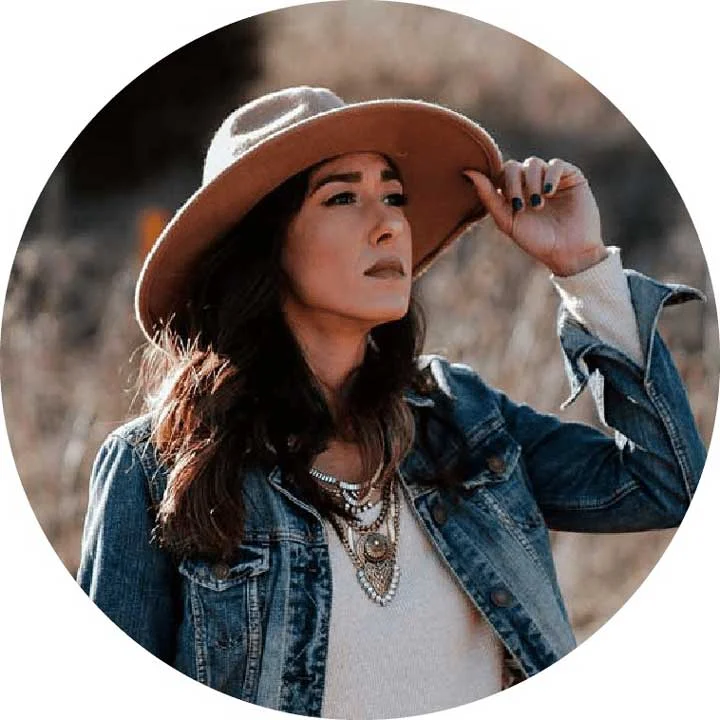

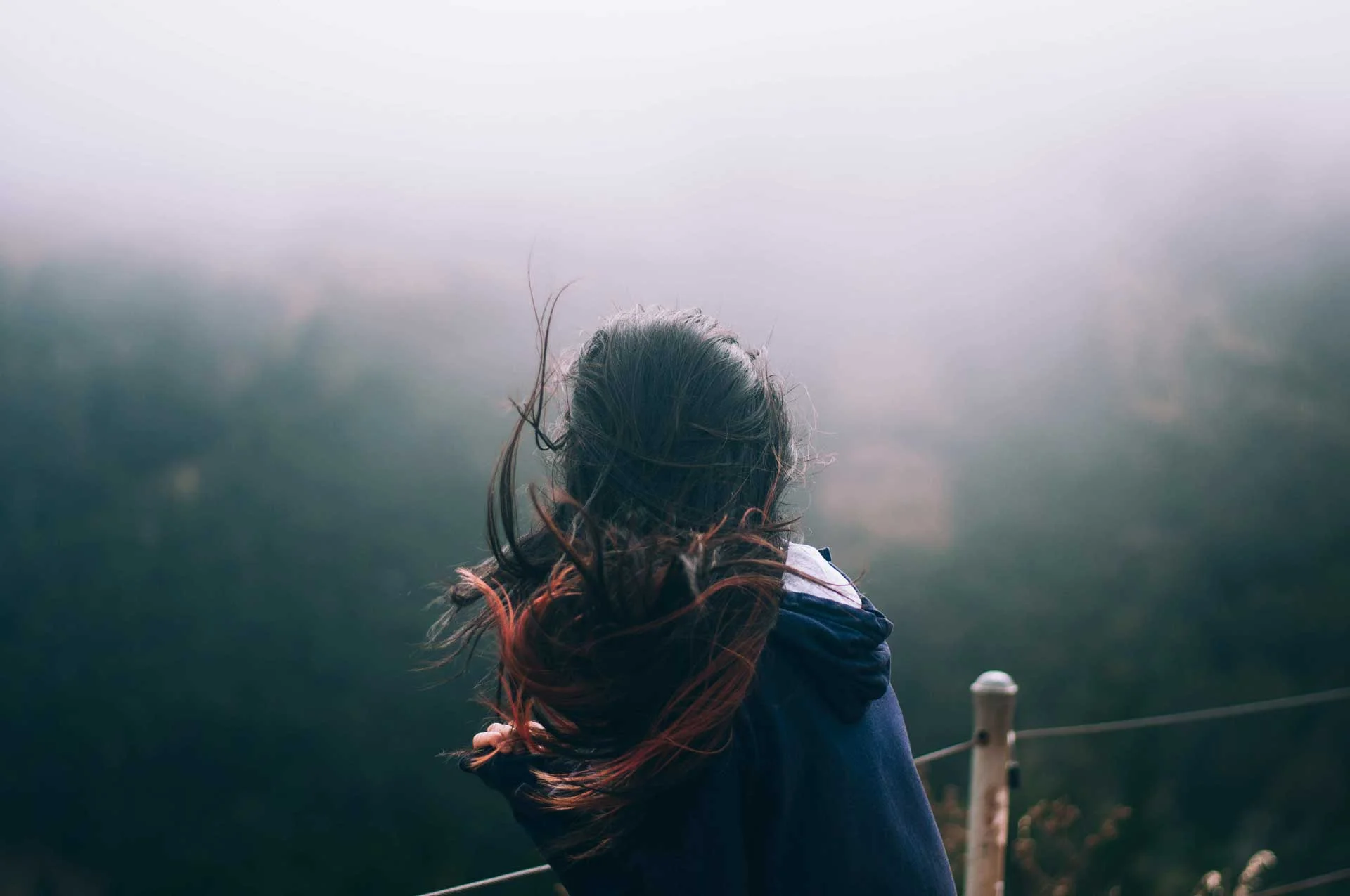
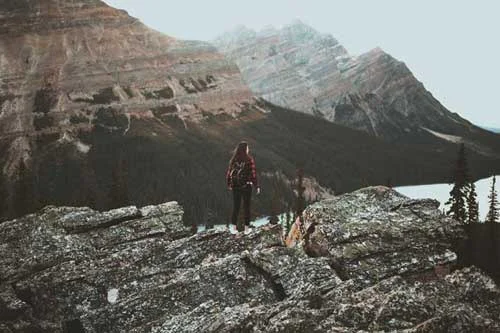
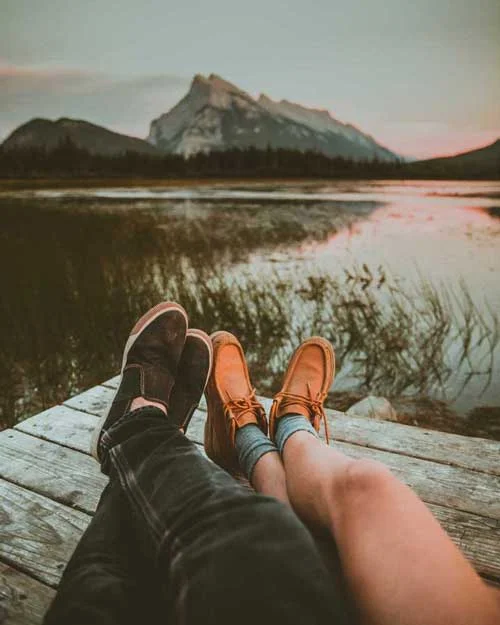
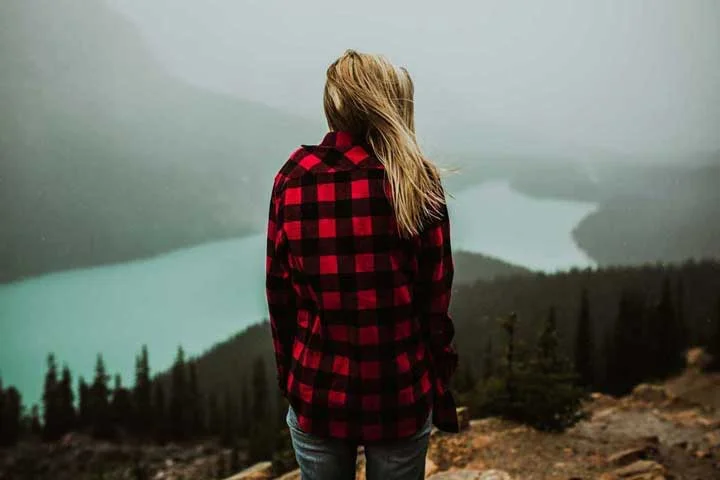
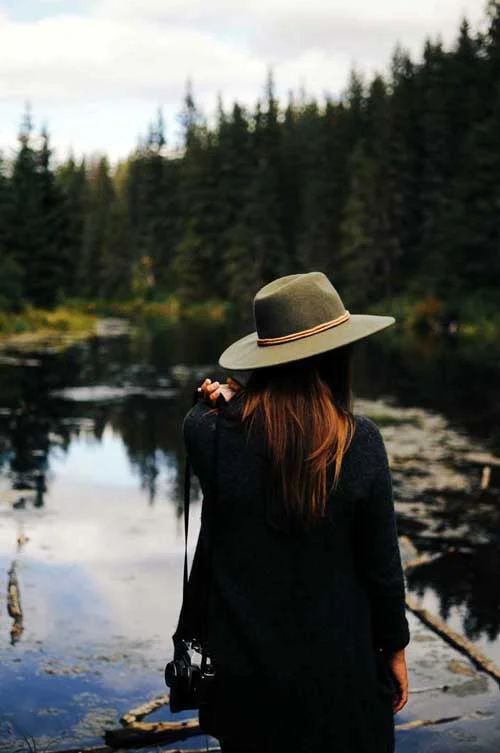









Hey Bradley! Such a long time ago, but I will always be grateful for the salt pills you shared with me during the Gobi March! Hope you are well and still hiking the world.
Good… no great memories!
-James